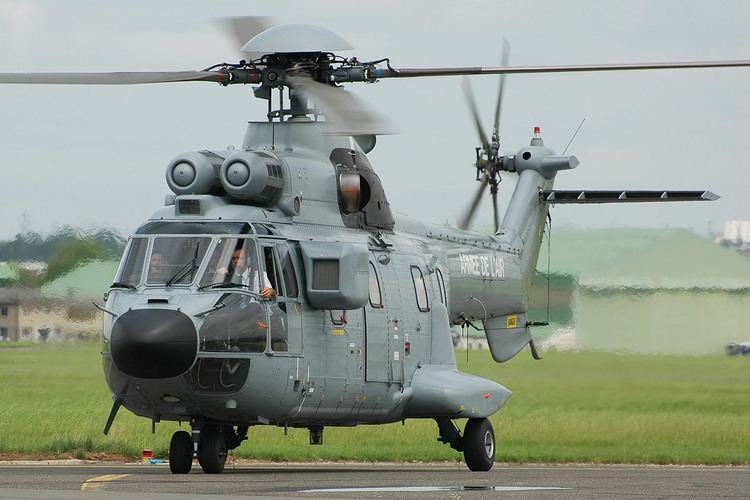Operator Armée de l'air Elevation AMSL 584 ft / 178 m 1,813 5,948 Elevation 178 m Owner Government of France | Location Villacoublay, France 09/27 1,813 5,948 Asphalt Phone +33 1 45 07 31 07 | |
 | ||
Address 10 Route de Gisy, 78140 Vélizy-Villacoublay, France | ||
Vélizy – Villacoublay Air Base (French: Base aérienne 107 Vélizy-Villacoublay) (ICAO: LFPV) is a French Air Force (French: Armée de l'Air (ALA) base. The base is located approximately 2 miles (3.2 km) southeast of Vélizy-Villacoublay; about 8 miles (13 km) southwest of Paris.
Contents
Units
The base is the home station for the following units:
Aircraft
Aircraft assigned to the base are:
History
Villacoublay Air Base was built prior to World War II as a French Air Force facility.
German use during World War II
Seized by the Germans in June 1940 during the Battle of France, Villacoublay was used as a Luftwaffe military airfield during the occupation. Known units assigned (all from Luftflotte 3, Fliegerkorps IV):
KG 55 and KG 27 took part in the Battle of Britain; AFG 14 was a photoreconnaissance organization; JFS 5 was a training unit for Bf 109 pilots; JG 105 and JG 54 were day interceptor units against Eighth Air Force heavy bombers.
It was attacked on several occasions by heavy bombers of both the United States Army Air Force Eighth and Fifteenth Air Forces during 1943 and early 1944. Largely due to its use as a base for Bf-109 and Fw-190 interceptors, Villacoublay was attacked by USAAF Ninth Air Force B-26 Marauder medium bombers and P-47 Thunderbolts mostly with 500-pound General-Purpose bombs; unguided rockets and .50 caliber machine gun sweeps when Eighth Air Force heavy bombers (B-17s, B-24s) were within interception range of the Luftwaffe aircraft assigned to the base. The attacks were timed to have the maximum effect possible to keep the interceptors pinned down on the ground and be unable to attack the heavy bombers. Also the P-51 Mustang fighter-escort groups of Eighth Air Force would drop down on their return to England and attack the base with a fighter sweep and attack any target of opportunity to be found at the airfield.
American use
It was liberated by Allied ground forces about 27 August 1944 during the Northern France Campaign. Almost immediately, the USAAF IX Engineer Command 818th Engineer Aviation Battalion began clearing the base of mines and destroyed Luftwaffe aircraft; filling bomb craters in the runway with rubble and an asphalt patch along with repairing operational facilities for use by American aircraft. Subsequently, Villacoublay became a USAAF Ninth Air Force combat airfield, designated as "A-42" about 30 August, only a few days after its capture from German forces.
Almost immediately, the 48th Fighter Group moved into the repaired air base, flying P-47 Thunderbolts from 29 August until 15 September 1944. The combat unit moved east along with the advancing Allied forces and Villacoublay became a supply and maintenance base for combat aircraft, becoming the home of the 370th Air Service Group and several Air Materiel squadrons from Air Technical Service Command. It was also given the designation of AAF-180. In addition, numerous C-47 Skytrain squadrons moved in and out, supporting airborne operations, including Operation Varsity, and Allied airborne crossing of the Rhine in March 1945.
After the war ended, Villacoublay remained under American control, designated as AAF Station Villacoublay. It was assigned to the United States Air Forces in Europe as a transport base by the C-47 Skytrain-equipped 314th Troop Carrier Group. It remained under USAFE control until 31 August 1946 when it was returned to the French Air Force.
From 1945
The base has been totally rebuilt since with war. The prewar/wartime runway, 11/29 is now closed and a new east-west 6000' (1800m) runway 09/27 laid down along with expanded aircraft parking areas and multiple hangars as part of an operational NATO air base.
After 1964 for a period, the base was the home to the Military Air Transport Command (COTAM).
